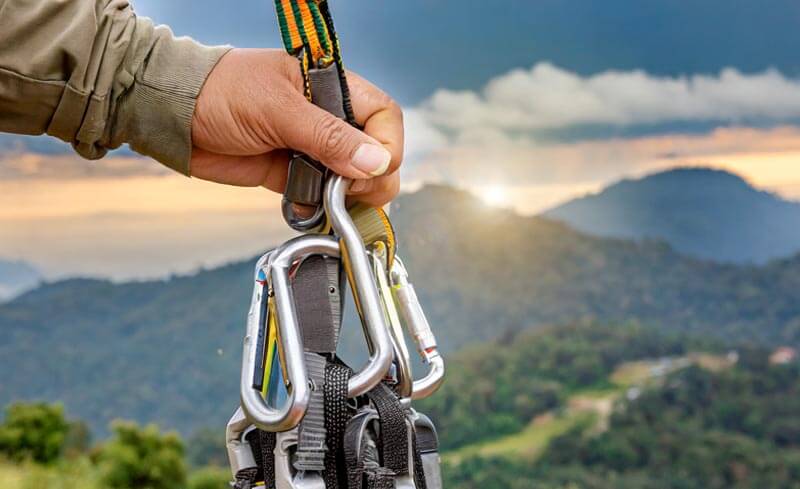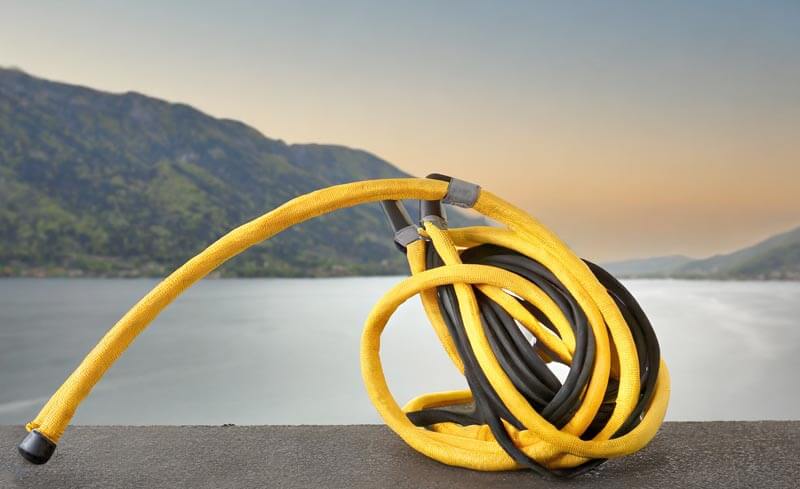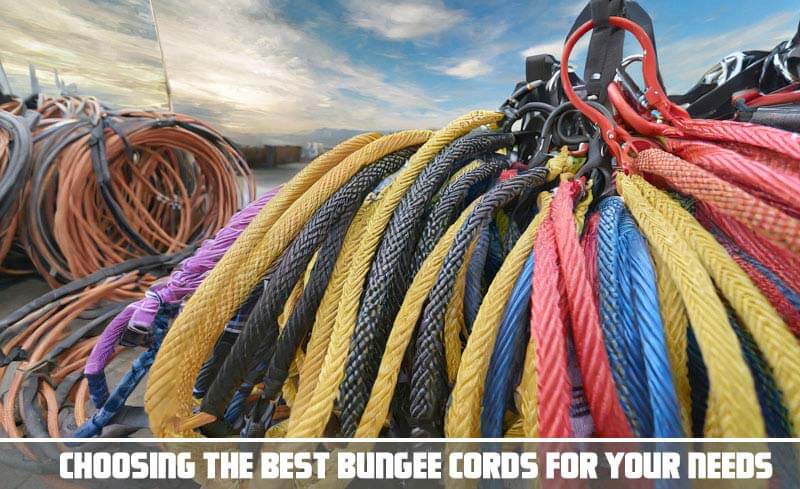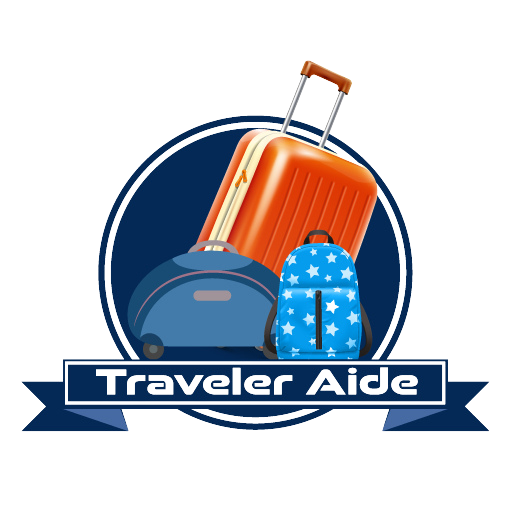Bungee cords are a versatile and practical tool used for various purposes, both on and off the trail.
As an avid traveler, I’ve learned a few tricks to make life on the road easier. One of my favorite hacks is using bungee cords to secure items in my backpack. I have traveled the world with all my belongings on my back, so I’ve become skilled with these elastic cords.
Bungee cords are great for backpackers because they are lightweight, cheap, and beneficial. You can use bungee lines to add layers, secure tent poles, or attach souvenirs.
In this guide, I’ll share some of the best ways to use bungee cords on a backpack and ensure a hassle-free trip. Let’s go to start.
Why Do Backpacks Have Bungee Cords?
Backpacks come equipped with bungee cord attachments so you can strap on extra items that won’t fit inside your pack. You can use bungee cords to secure sleeping pads, hiking poles, jackets, and other gear. It frees up space in your backpack and makes items easily accessible.
I pack strategically. My heaviest gear goes closest to my back. My sleeping bag and pad are strapped on the outside. I use bungee lines, It helps distribute the weight and prevents my backpack from feeling too overloaded. The stretchy lines keep things secure while hiking, preventing sliding or falling.
Some additional tips for using backpack bungee cords:
- Make sure items are evenly balanced and secure before hitting the trail. Give your pack a shake to ensure nothing feels loose.
- Don’t overload your pack by strapping on more than it can handle. Your backpack was designed to distribute a certain amount of weight – keep it within its limits. If you need to adjust or cut the bungee cords, bring a Swiss Army knife.
- Wrap sharp edges or points in cloth or padding before strapping gear to your pack. It prevents the bungee cords from snagging or fraying.
- Double up on bungee lines or use locking carabiners for larger or bulkier items. Two lines are more secure than one.
You’ll be an expert at using backpack bungee cords with some practice.
How to attach a bungee cord to your backpack
As an avid traveler and backpacker, I’ve used my fair share of bungee cords to secure loads to my packs over the years. Here are some tips I’ve picked up for attaching bungee cords to your backpack
1. Attach to External Loops or Straps
If your backpack has external loops, straps, or daisy chains, these are ideal for attaching bungee cords. Hook the bungee hook through the loop or strap and cinch it over your load. It distributes the weight and prevents the cord from damaging your pack.

2. Use Carabiners for Attachment Points
If your pack lacks external attachment points, carabiners are a great solution. Clip the carabiner through a strap or loop on your pack, then attach the bungee cord hook to the carabiner. The carabiner is an anchor point to cinch down your load securely.

3. Wrap Around Pack Frame
For packs with an internal frame, you can wrap the bungee cord around the frame through the back padding. Pull the cord snug but not too tight – you want to protect the padding and structure. It works best for larger, bulkier items like sleeping pads, tents, or chairs.

4. Secure Excess Cord
Once you’ve cinched your load down, wrap any excess bungee cord around the attachment point and tie it off to prevent snags. You can tuck any excess into the bungee cord pocket or your pack.

You can easily attach gear to your backpack by using these elastic cords. Just experiment a little. To protect your pack, don’t tighten the bungees too much. Make sure your load is secure and evenly distributed for the journey ahead.
How to Use Bungee Cords for Various Purposes
Bungee cords can be used on and off the trail for various purposes. Here are a few ideas
You can attach things to your backpack using elastic cords with hooks. These include sleeping pads, tents, jackets, and other gear.
1. Securing a Tent
The most common use for bungee cords is strapping a tent to the outside of your pack. Attach one end of the line to your backpack, like a daisy chain or gear loop. Wrap the cord around your tent. Finally, hook the other end to the opposite side of the pack.
Ensure the cord is tight to hold the tent in place but not too close to strain the tent or pack. For larger tents, you may need to use many bungee cords spaced around the tent’s perimeter.
2. Attaching a Sleeping Pad
If you have an inflatable sleeping pad, you can use bungee cords to attach it to your backpack. Wrap two bungee cords lengthwise around the pad, spacing them about a foot apart. Attach the hooks to gear loops or daisy chains on opposite sides of your pack.
It prevents the pad from sliding and keeps it centered on your pack. Be careful when putting on or taking off your package to avoid snagging the sleeping place.
3. Jackets and Other Layers
When I go on long hikes, I usually use bungee cords to attach my jacket or extra layers to my pack. Take the sleeves or neckline of the coat and wrap a line around them. Attach the ends to points on your pack. It keeps the skin in place but allows you to grab it when needed quickly. My pack has bungee cords to hold wet clothes, snacks, and hiking poles.
Bungee cords are helpful for backpackers and hikers in many ways. They are light and cheap, making attaching essential gear to your pack easy. Be creative and find even more ways to use these versatile elastic cords!
Choosing the Best Bungee Cords for Your Needs

Bungee cords are one of the most valuable tools in my kit for keeping everything in place. I’ve learned that picking the right bungee cords greatly impacts their performance.
I like to use thin bungee cords, about 1/4 inch thick, for lightweight gear such as a sleeping pad, tent poles, or a jacket. The thinner cords can hold things in place without causing harm. I use more comprehensive 3/8-inch bungee lines for heavier equipment or bulkier loads. The additional width gives more strength and durability to strap larger objects securely.
I carry a few different sizes in my pack for the best versatility. I like to use shorter cords, about 6-8 inches long, for tying things to my package, like trekking poles or an umbrella. I can better arrange and secure my gear with longer bungee cords 12-16 inches. The longer length lets me connect things in different spots for better weight balance in my bag.
The type of hook or end fitting on the bungee cord also makes a difference. Ball bungees have plastic or rubber ends that won’t scratch gear. Metal hook ends provide a more substantial grip, but you must be careful they don’t catch or snag on fabrics. I prefer bungee cords with an adjustable toggle or cord lock ends for the most secure hold.
These allow me to tighten the cord to the perfect tension for whatever I’m strapping down.
I’ve hiked many miles with a heavy pack and finally found the perfect bungee lines. They come in different sizes and lengths and have the right fittings. Now, my gear stays in place and is comfortable and secure. Pick the right equipment for your needs and goals for a safe and fun trip. You’ll find the best way to attach gear to your backpack by trying different methods.
Conclusion
I have backpacked around the world for years. Bungee cords are very useful for organizing my pack.
They’re lightweight, inexpensive, and highly versatile. Bungee cords can secure a sleeping bag, strap down hiking poles, or compress extra layers.
In this guide, I have shared with you, in light of my experience, how to attach a bungee cord. Also, I shared how to use different purposes and choose the best cords.
These tips will help you get the most out of your backpack and all the gear you need to carry. If you have the correct bungee wires and some practice, you’ll be well on your way to becoming a great packer.
If you have any more questions, please write them below.

Hey, I’m Dorothy E. Turner! I’ve spent years exploring the world and diving deep into the travel scene. Along the way, I’ve developed a real knack for understanding what makes a great travel backpack. I’m passionate about sharing my expertise to help fellow travelers find the perfect backpack for their adventures.


